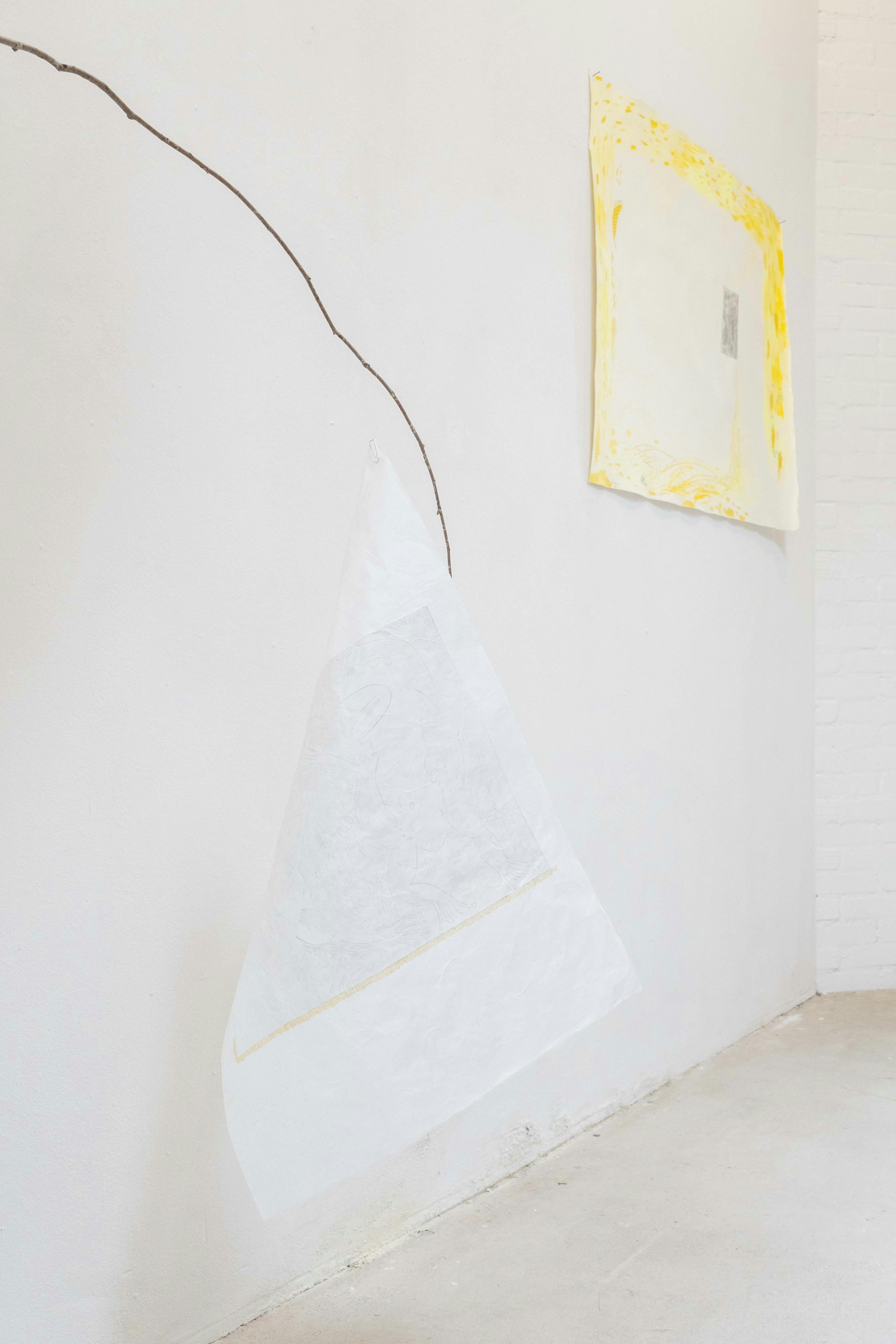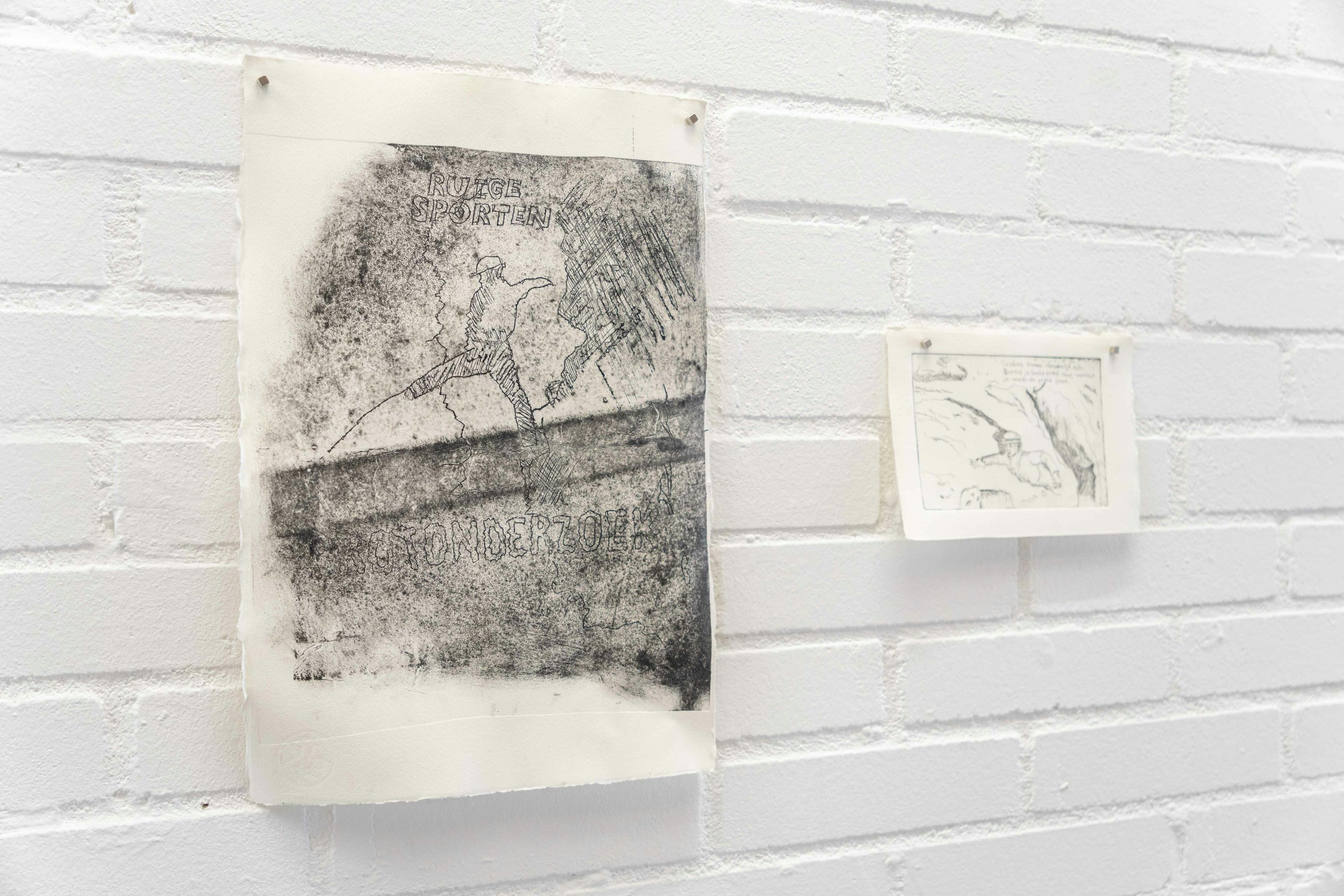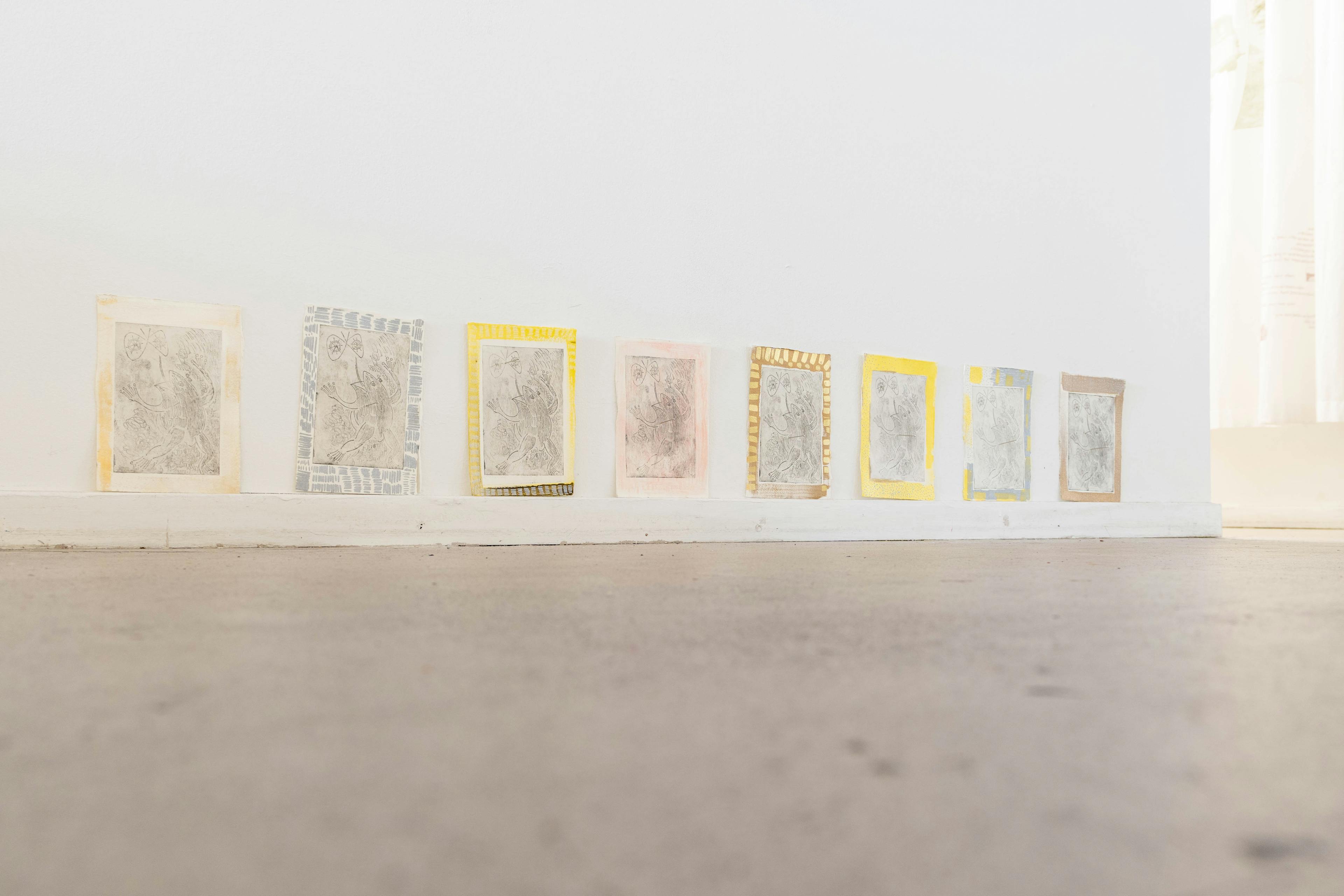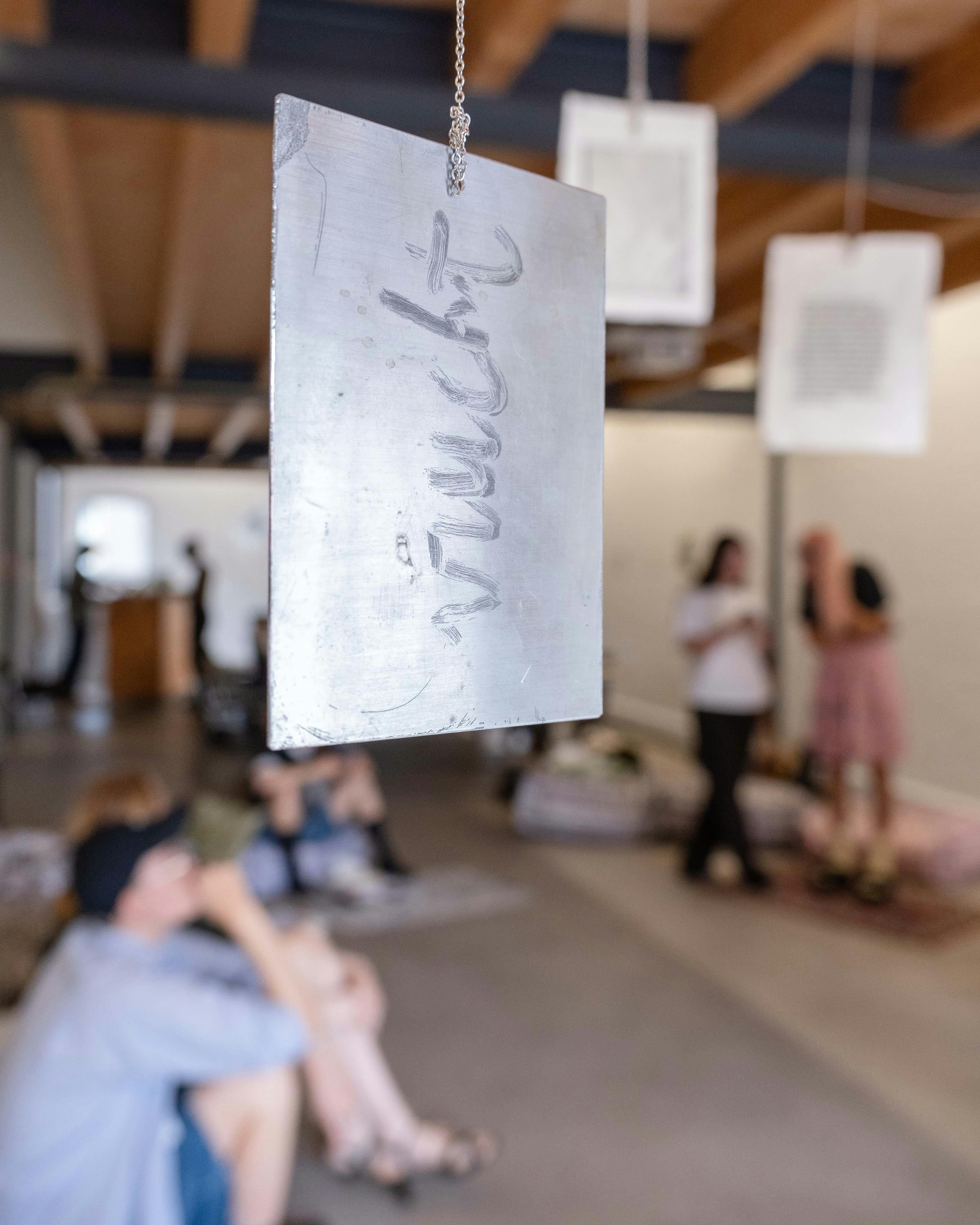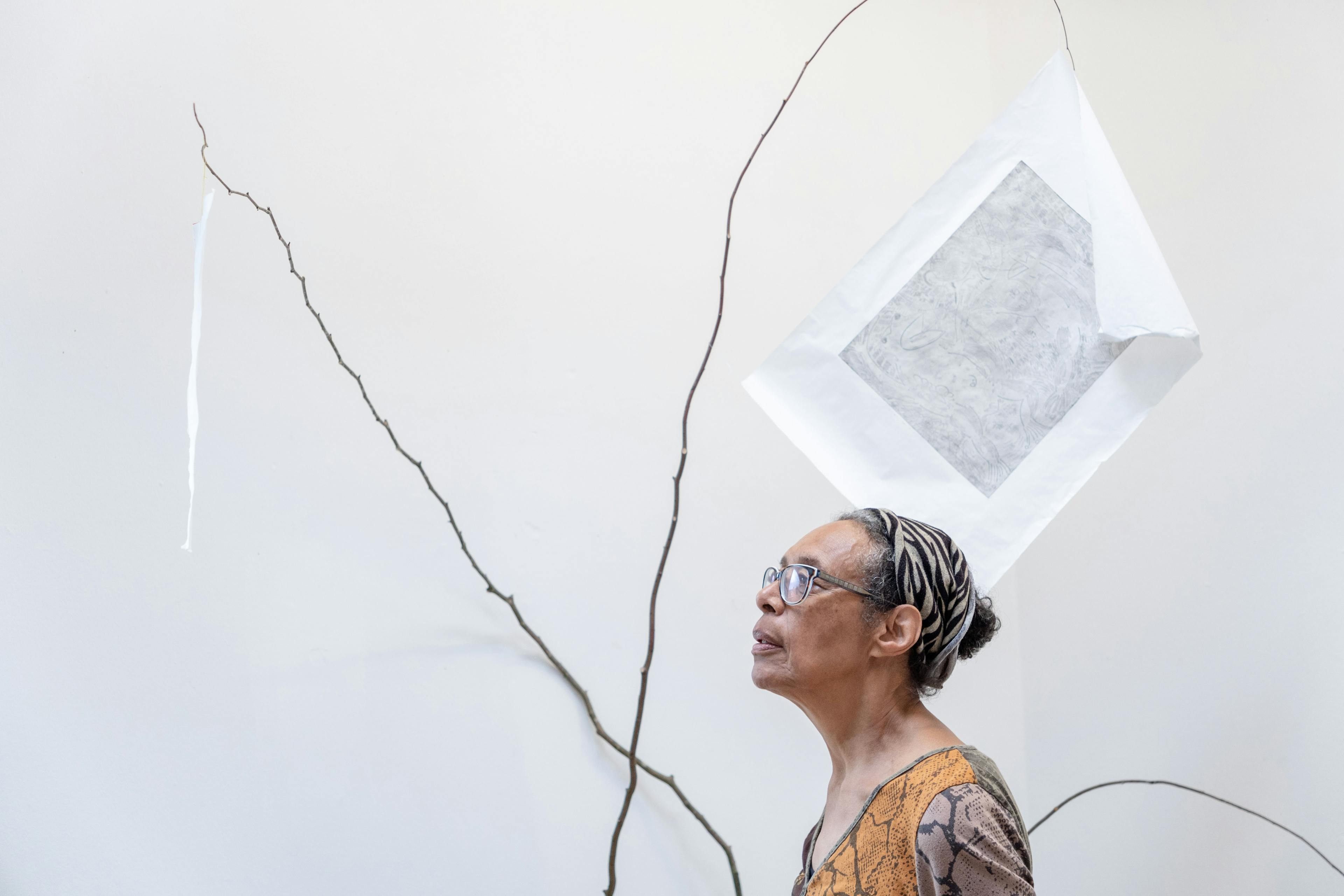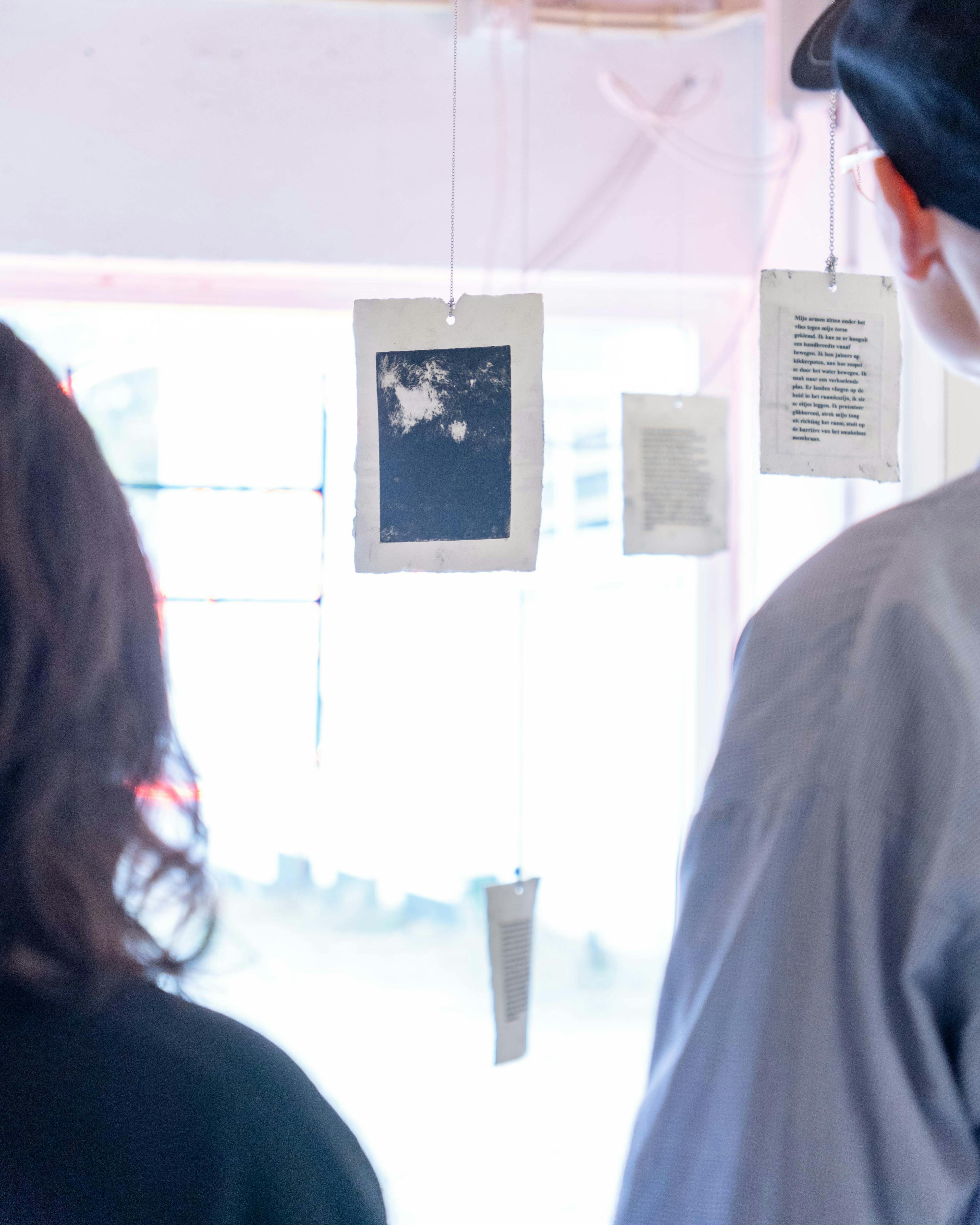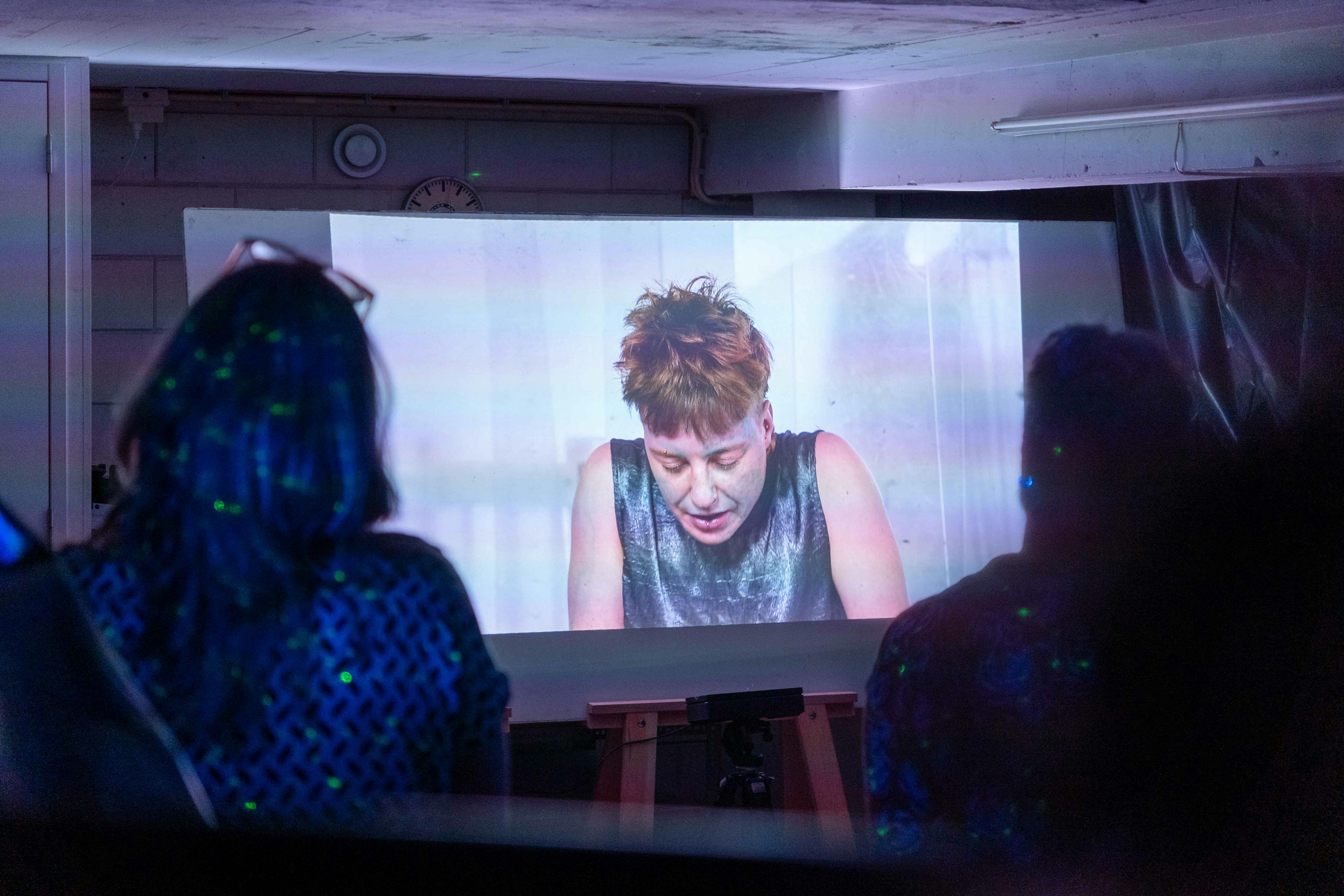Now on view: the results of the third Ploegendienst, part of the H0ha program.
Ploegendienst 3 | Moni Zwitserloot, Hussel Zhu & de Feministische Handwerkpartij
Work period: June – September 2025
Autumn Gather Together: 18 – 20 September 2025
On view: 22 September – 5 December 2025
H0ha is a program in which poets, visual artists, activists, and publishers are invited to (co-)work in so-called “Ploegendiensten” (Shifts) at Plaatsmaken.
Each season concludes with a Gathering Together, during which activities are brought together into a vibrant mix of artistic and social experiment.
For this program, we collaborate with the artist collective Sunflower Soup and curator Lenn Cox. The Autumn Gather Together took place from 18 to 20 September.
OVER DE PLOEGENDIENST
Ololyga”
“Olo-olo what?”
Ololyga is an Ancient Greek word that refers to the
high-pitched, horrifying, blood-curdling screams of a woman*.
These are sounds that are emitted during intense pain or intense pleasure.
The overarching theme of this Ploegendienst is how the body can serve as a space for resistance. This resistance is not bombastic and in-your-face as we are perhaps accustomed to, but rather modest, subtle and subversive. Through etchings, textiles, prints, texts and other interventions in the space, the artists demonstrate how they challenge societal norms and celebrate bodies, both human and non-human, that do not conform to the status quo. These works demand the viewer's attention and concentration, inviting them to engage with them, participate, question them, and adjust their own expectations.
In her essay 'Gender of Sound', Anne Carson describes how special festivals were held in classical Greek culture where women could make these sounds outside the city limits, the domain of civilised men. Men, who use reason as a barrier to keep emotions at bay, want nothing to do with people who leak on all sides. The person with two 'mouths', one above and one below. One with which unspeakable things are done, and one with which unspeakable things are said. With all their frightening, uncontrollable physicality and bodily fluids, this person is closer to the animal kingdom than to the world of developed humans, oh oops, cisgender men.
The etchings by Emmeline de Mooij (Feministische Handwerk Partij), featuring the figure of Sheela Na Gig, illustrate this very directly. We see an old body that is as much vulva as mouth, with hands that spread the genitals open. This figure was often carved in stone and placed on buildings, primarily medieval churches in Ireland. The reason for this is unclear, but what we do know is that the figure predates Christianity. They were considered a witch-like figure associated with twilight, transition and transformation. Embodying death as much as life. Through Sheela Na Gig, Emmeline questions current issues, such as who can claim ownership of their sexuality. Is it reserved for young bodies? Why are we not surprised when an older man displays his sexuality, yet turn up our noses when an older woman does the same?
In their text 'Vruchtvlees', Moni Zwitserloot offers a different perspective on the body. They employ the horror trope of 'gore' to challenge our perception of what the body can experience. Moni began by asking whether it is possible to make etchings using bodily fluids. This then gave rise to their text. Drawing inspiration from the everyday sensation of pulling a piece of skin off your fingernail, the text takes us on a journey of sensations that far surpasses this experience. The text can be read on the back of the prints, which hang gracefully from thin chains suspended from the ceiling.
Drawing inspiration from the Japanese Chōjū-giga scrolls, in which monkeys, frogs, and rabbits take on human roles, Hussel Zhu employs the frog (or toad) as a subtle means of criticising contexts in which political expression is suppressed. His etchings are like a 'knife in water': sharp yet restrained. We see frogs in many guises: disguised as bodhisattvas (in some forms of Buddhism, this is a being striving for enlightenment), nailed in the corner like a curse on a piece of paper, or hanging from the willow branch of Guanyin, the goddess of mercy. At the back of the room is a large piece of work in which a frog is surrounded by yellow and gold lines. These colours are associated with power in China. Visitors are invited to challenge the concept of power itself by leaving their mark on the work.
Visitors are also challenged by the work of Margreet Sweerts (Feministische Handwerkpartij). White flags bearing etchings in the corners stand motionless in the space. This piece awaits activation by two people. They want to feel the resistance of the air and serve as an extension of the bodies that set them in motion. The piece calls for movement together and stems from the question: what do we surrender to? Do we submit to harsh forces that squeeze all humanity out of us? Or do we surrender to a society that seeks to render disabled, feminine, queer and trans bodies invisible?
The white flag is often considered taboo in contemporary activism, particularly when used by white people from a Western perspective. However, if you look closely or hold the flags in your hands, you will see that they are not actually white. They have a tactile history. They are not passive; they call for connection and reflection on the body of the person wearing them. While you are in the Plaatsmaken space, you might like to ask another visitor to accompany you outside, where you can tie the flags together and experience how the wind plays with the fabric.
The four participants have collectively made a music video based on their shared experience of the suppression of raw energy. In the video, they allow the sounds inside them at that moment to come to the fore. Is this perhaps a modern version of ololyga? Do we still feel uncomfortable expressing these kinds of sounds? Are they permitted within the city limits?
*In this day and age, 'woman' could refer to anyone who does not identify as a cisgender man. A cisgender person is someone whose gender identity corresponds to their birth sex.
ABOUT THE PARTICIPANTS
Moni Zwitserloot is a writer and performer. Key elements in their work include physicality, transformation, and community. Being strange, muck, or weird is celebrated through the use of gore elements and magical realism. Current obsessions: insects, fungi and bodily fluids.
Hussel Zhu is a visual artist, short fiction writer, and researcher. In his printmaking, he often uses the image of a dancing frog—inspired by the Japanese ink painting Birds, Beasts, and Human Play, and the animal paintings of Bada Shanren—where animals satirize those in power.
The Feministische Handwerkpartij is a political feminist artist movement that is dedicated to studying, repairing, speaking, patching up, unlearning and mending. It is initiated by visual artist Emmeline de Mooij and performance director Margreet Sweerts.
With thanks to the Mondriaanfonds and the Municipality of Arnhem.
